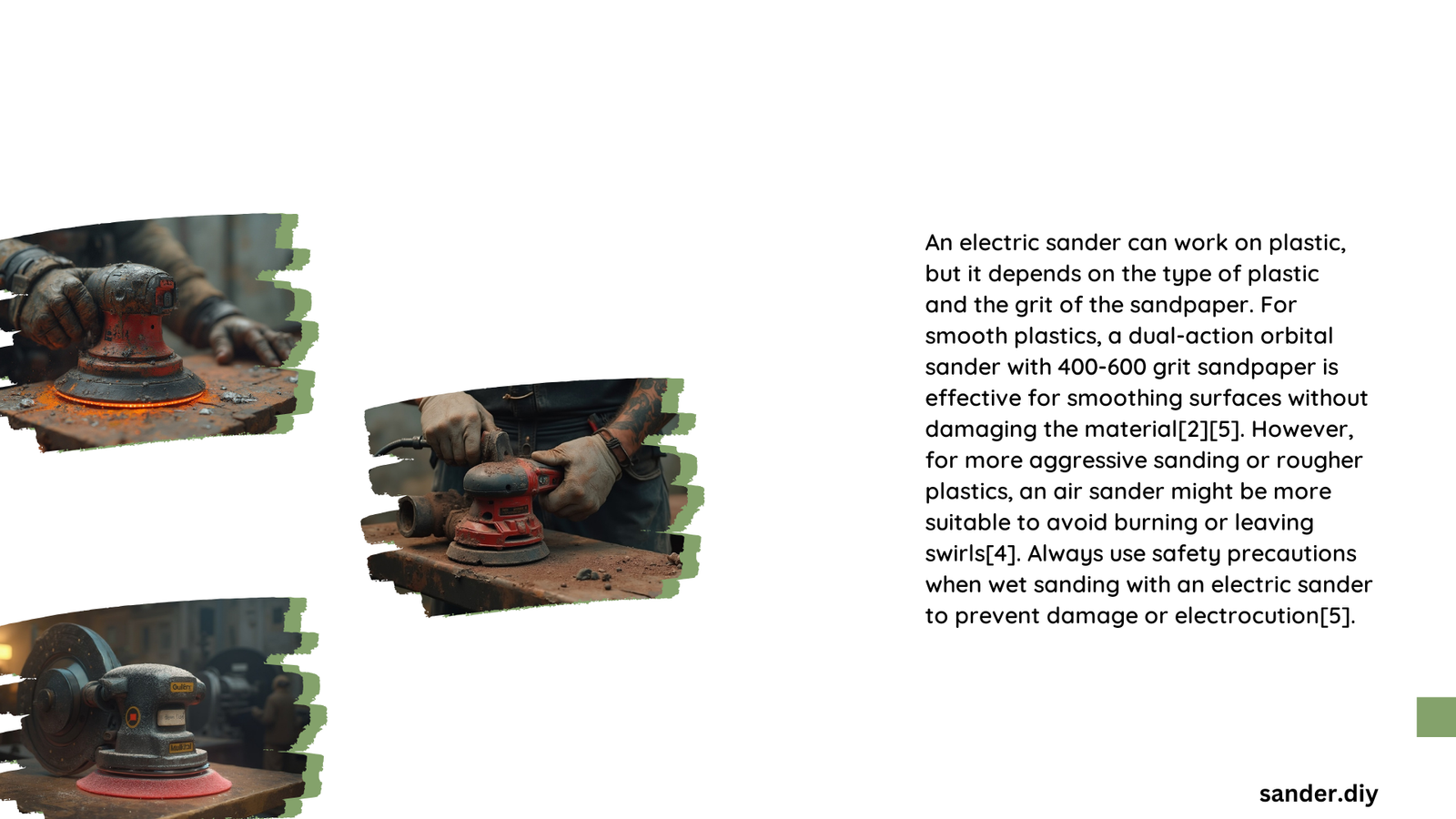Electric sanders can be used on plastic, but with caution and proper technique. The effectiveness depends on the type of sander, sandpaper grit, and plastic material. Orbital sanders are generally the best choice for plastic, operating at lower speeds to prevent melting. Using the right sandpaper grit and applying proper techniques are crucial for achieving a smooth finish without damaging the plastic surface.
What Types of Electric Sanders are Suitable for Plastic?
When considering using an electric sander on plastic, it’s essential to choose the right type of sander to avoid damaging the material. Here’s a breakdown of different sander types and their suitability for plastic:
- Orbital Sanders
- Best choice for most plastic materials
- Provides smooth finish
- Less likely to generate excessive heat
-
Use at low to medium RPM (4,000 to 8,000)
-
Detail Sanders
- Suitable for small, precise areas
- Operates at lower speeds
-
Ideal for delicate plastic surfaces
-
Belt Sanders
- Generally not recommended for plastic
- High speed and aggressive action can melt or damage plastic
- Use only with extreme caution and at very low speeds
What Sandpaper Should Be Used on Plastic?

Choosing the right sandpaper is crucial when sanding plastic. Here’s a guide to help you select the appropriate grit and material:
| Grit Level | Grit Range | Purpose | Recommended Abrasive |
|---|---|---|---|
| Coarse | 120-150 | Initial smoothing, removing large imperfections | Aluminum oxide or silicon carbide |
| Medium | 220-240 | General sanding, smoothing surface | Silicon carbide preferred |
| Fine | 320-400 | Final polishing, achieving smooth finish | Silicon carbide or aluminum oxide |
Abrasive Material Recommendations:
- Silicon Carbide: Better for cutting and polishing plastics due to sharper edges
- Aluminum Oxide: Good for general-purpose sanding and smooth finishes
Backing Material:
For orbital sanders, use sanding discs with hook-and-loop or peel-and-stick backing for secure attachment and easy replacement.
How to Effectively Sand Plastic with an Electric Sander?
Follow these steps to effectively sand plastic using an electric sander:
- Initial Coarse Sanding
- Use 120-150 grit sandpaper
- Apply light to moderate pressure
- Sand in the direction of plastic’s grain or mold lines
-
Keep the sander moving to avoid heat buildup
-
Medium Grit Sanding
- Switch to 220-240 grit sandpaper
- Reduce pressure slightly
- Continue sanding in the grain direction
-
Use slower, more controlled motions
-
Fine Grit Sanding
- Use 320-400 grit sandpaper
- Apply minimal pressure
- Sand in small, circular motions
- Ensure constant movement to prevent overheating
What Precautions Should Be Taken When Sanding Plastic?
To ensure the best results and prevent damage when sanding plastic, consider the following precautions:
- Heat Management
- Use lower RPM settings to minimize heat generation
- Take regular cooling breaks
-
Monitor plastic temperature and stop if it becomes too hot
-
Static Control
- Use an anti-static cloth or brush to remove dust and debris
-
Apply a small amount of water or lubricating spray to reduce friction
-
Pressure Control
- Apply light to moderate pressure, especially with coarser grits
-
Reduce pressure as you progress to finer grits
-
Sander Movement
- Keep the sander moving constantly to prevent localized heat buildup
- Avoid staying in one spot for too long
What Are the Potential Challenges of Sanding Plastic?
Sanding plastic with an electric sander can present several challenges:
- Heat Sensitivity
- Plastic can melt or deform under high heat
-
Requires careful speed and pressure management
-
Surface Scratches
- Incorrect grit selection can leave visible scratches
-
Progression through grit levels is crucial for a smooth finish
-
Static Buildup
- Can attract dust and debris, affecting the sanding process
-
Requires regular cleaning and anti-static measures
-
Material Variability
- Different plastic types respond differently to sanding
- May require experimentation to find the best approach for each material
By understanding these challenges and following the recommended techniques, you can successfully use an electric sander on plastic materials while achieving a smooth, professional finish.
References:
1. DTC-UK: Applications and Uses of Electric Orbital Sanders
2. National Abrasives: Electric Orbital Sander Buyer’s Guide
3. The Engineering Choice: How to Choose the Best Electric Sander
